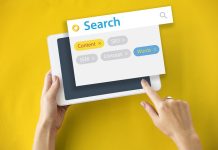EdTech often gets associated with digital-first or remote learning environments, but its influence reaches well beyond screens and internet connections. Even in classrooms where internet access is limited or unreliable, technology is shaping how students learn and how teachers teach.
The question isn’t whether EdTech belongs in offline classrooms—it’s how to make it useful when the infrastructure doesn’t fully support a connected experience. Learn more about EdTech development here: https://www.altamira.ai/edtech-development/
EdTech tools for offline learning
Offline learning environments don’t mean “no tech”—they just require different types of tools. From content access to classroom management, EdTech can support in-person learning without being fully dependent on the cloud.
Local-first learning platforms
Some learning platforms are designed to work without a constant internet connection. They store content and track student progress locally, syncing only when a connection is available. This is especially valuable in rural or under-resourced areas where bandwidth is limited but devices are available.
Portable digital content
Tools like interactive textbooks, videos, or simulations stored on USB drives or offline apps let students and teachers use rich educational materials even in classrooms without Wi-Fi. This gives access to quality content without needing a constant data connection.
Classroom management tools
Apps that handle grading, attendance, or lesson planning can often work offline and sync when needed. This helps teachers stay organised without being tied to a network—and reduces the need for printed paperwork or spreadsheets.
Assessment tools
Some quizzes and testing platforms allow students to complete assessments offline and upload results later. This minimises disruption due to poor connectivity and lets teachers continue instruction without delays.
Benefits of EdTech adoption for schools
Introducing EdTech into offline classrooms doesn’t mean replacing traditional teaching—it means supporting it with tools that reduce friction and open up new possibilities.
Access to quality content
Offline-compatible tools give students exposure to educational materials they might not otherwise have—whether that’s interactive science simulations or culturally relevant learning resources. This helps bridge content gaps without needing constant internet access.
More time for teaching
When admin tasks like grading or lesson planning are streamlined through offline-capable tools, teachers get more time to focus on students. Even small efficiencies—like auto-marked quizzes or saved lesson templates—can add up over the course of a school week.
Consistent learning experiences
EdTech tools designed to work offline can offer a stable, repeatable experience, which helps teachers maintain structure in their lessons. This consistency is especially important in schools where infrastructure or resources can vary from day to day.
Tech adoption without disruption
Offline-first tools allow schools to introduce EdTech at a sustainable pace. They don’t require major infrastructure investments up front and can evolve as the school’s connectivity and capacity improve.
Final words
EdTech is about supporting real classrooms, no matter the setting. In offline environments, thoughtful tools can make a meaningful difference in how students learn and how teachers manage their work. The key is to design and adopt technology that fits the realities of the classroom, not the other way around.










































